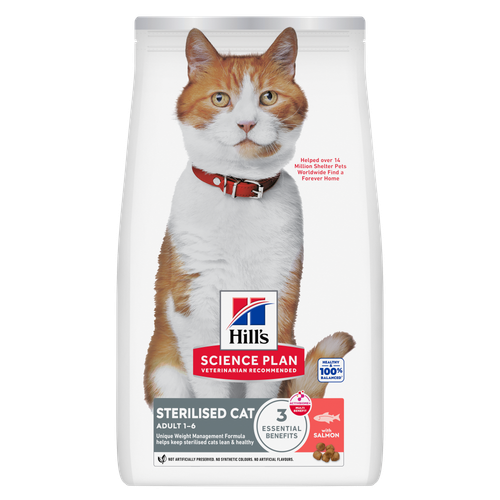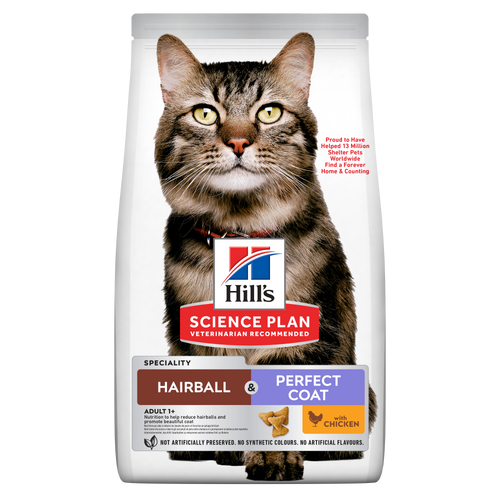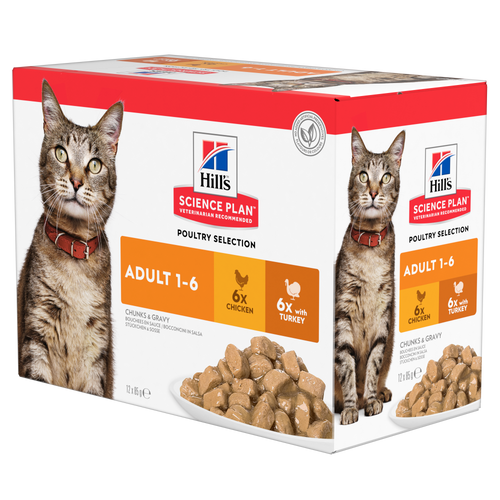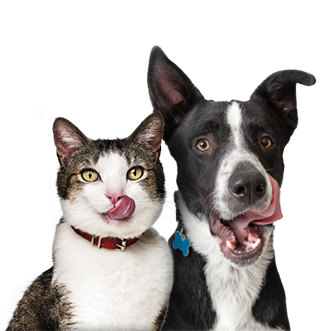
-
Find the right food for your petTake this quiz to see which food may be the best for your furry friend.Find the right food for your petTake this quiz to see which food may be the best for your furry friend.Featured products
 Mature Adult Dog Food
Mature Adult Dog FoodHill's Science Plan Mature Adult Multipack Wet Dog Food with Chicken & Beef are complete premium pet foods for mature adult dogs from 7 years. Your dog will love these deliciously smooth and savoury minced loaves, formulated to deliver the appropriate amount of energy to support the needs of adult dogs.
Shop Now Adult Wet Dog Food with Beef
Adult Wet Dog Food with BeefHill's Science Plan Adult Multipack Wet Dog Food with Chicken, Beef & Turkey are complete premium pet foods for adult dogs from 1 year. Your dog will love these deliciously smooth and savoury minced loaves, formulated for balanced nutrition and overall health.
Shop Now Puppy Food
Puppy FoodHill's Science Plan Puppy Multipack Wet Dog Food with Chicken & Beef are complete premium pet foods for growing puppies from weaning until 1 year old and for pregnant and nursing dogs. Your puppy will love these deliciously smooth and savoury minced loaves, formulated for balanced nutrition and overall health.
Shop NowFeatured products Sterilised Adult Cat Food
Sterilised Adult Cat FoodHill's Science Plan Adult Sterilised Cat Dry Food with Salmon is specially formulated with ActivBiome+ Multi-Benefit Technology. It is a precisely balanced nutrition, tailored to meet the needs of sterilised cats, to help keep them lean & healthy.
Shop Now Sensitive Stomach & Skin Adult Cat Food
Sensitive Stomach & Skin Adult Cat FoodHill's Science Plan Sensitive Stomach & Skin Adult Wet Cat Food with Turkey is a complete pet food for adult cats, aged 1–6 years. This highly digestible wet food comes in a pouch and supports healthy digestion, as well as nourishes skin and promotes a thick and lustrous coat.
Shop Now Hairball & Perfect Coat Adult Dry Cat Food with Chicken
Hairball & Perfect Coat Adult Dry Cat Food with ChickenHill's Science Plan Hairball & Perfect Coat Adult Cat Food with Chicken is formulated to effectively help avoid hairball formation in adult cats while promoting a beautiful coat. Thanks to its mix of essential omega-6 fatty acids, this food benefits the cat's skin and fur, keeping them healthy and shiny. Our Advanced Fibre Technology helps reduce hairballs by naturally promoting their passage through the gut. This food is formulated with high-quality protein for a perfectly balanced, great-tasting recipe.
Shop Now -
Dog
- Dog Tips & Articles
-
Health Category
- Weight
- Food & Environmental Sensitivities
- Urinary
- Digestive
- Joint
- Kidney
-
Life Stage
- Puppy Nutrition
- Adult Nutrition
- Senior Nutrition
Cat- Cat Tips & Articles
-
Health Category
- Weight
- Skin & Food Sensitivities
- Urinary
- Digestive
- Kidney
-
Life Stage
- Kitten Nutrition
- Adult Nutrition
Featured articles The Incredible Science Behind Your Pet's Microbiome
The Incredible Science Behind Your Pet's MicrobiomeLearn what your pet's microbiome is, how it contributes to your pet's gut and overall health, and why nutrition is important in maintaining healthy microbiomes.
Read More The Right Diet For Your Pet
The Right Diet For Your PetIn people, the right diet is very important. If you are eating the wrong way for your metabolism, activity level, age and lifestyle you could end up with health issues.
Read More Show some love with wet foods: a great choice for pets with health issues
Show some love with wet foods: a great choice for pets with health issuesShow some love with wet foods: a great choice for pets with health issues.
Read More -


If you have a dog or cat, you know the struggle of dealing with unwanted pet hair around your home. Both dog hair removal and cat hair removal can seem like a never-ending battle. Here are some simple tips and tricks to help you conquer the fur around the house.
Carpets and Upholstery
 To remove dog hair from your upholstery, use a rubber glove, like the kind you wear to wash dishes. Simply dampen the glove and rub your palm over the surface of your furniture to wipe up the pet hair. If you don't have a rubber glove, Apartment Therapy suggests lightly rubbing a damp sponge over your upholstery instead. These tricks work just as well for cat hair removal, too. In fact, you can even use them to remove excess hair from your pet's body. Simply run a rubber glove (or a glove specifically manufactured for pet hair removal) over your dog or cat's body and watch as the hair statically clings to the glove instead of your pet.
To remove dog hair from your upholstery, use a rubber glove, like the kind you wear to wash dishes. Simply dampen the glove and rub your palm over the surface of your furniture to wipe up the pet hair. If you don't have a rubber glove, Apartment Therapy suggests lightly rubbing a damp sponge over your upholstery instead. These tricks work just as well for cat hair removal, too. In fact, you can even use them to remove excess hair from your pet's body. Simply run a rubber glove (or a glove specifically manufactured for pet hair removal) over your dog or cat's body and watch as the hair statically clings to the glove instead of your pet.
On carpets, try a broom with rubber bristles to loosen pet hair from carpet fibres and scrape them into a manageable pile. If you don't have this type of broom, a window squeegee can also work. For deeply embedded pet hair, try going over your pet's favourite lounging spots a couple of times with the vacuum. Many high-end vacuum cleaners feature powerful attachments made specifically for cleaning pet hair out of carpets. If you can afford to invest, look for a vacuum specially designed for homes with pets.
Hard Surfaces
Spray a soft cloth with furniture polish or dusting spray before using it to wipe down furniture. The spray will not only help attract stray hair, but will also help reduce the static that attracts pet hair in the first place.
Another way to reduce static and prevent pet hair from sticking is to wipe down skirting boards and other hard surfaces with dryer sheets. This can also work on upholstery. Just make sure to test a small area first since dryer sheets can leave behind a shiny film. For cleaning floors, use a microfibre mop. They tend to carry a static charge so they're better than standard mops at attracting and holding onto pet hair.
Robot vacuums have also become popular over the past couple of years. They can work on both hard and carpet surfaces. They tend to be more expensive than traditional vacuums, and they will only handle small amounts of shedding. However, they can be programmed to run on their own, cutting down on the time you spend sweeping yourself.


Tasty Tips
Young pets may need several visits in their first year for vaccinations. Adult pets generally benefit from annual check-ups, while senior or special-needs pets might require more frequent visits.
Clothes and Bedding
For a quick fix, you can go over clothes or bedding with a sticky lint roller. If you're environmentally conscious, look for the kind that you can rinse and reuse. A velvet lint brush also works well and tends to handle upholstery better than the typical roller. In a pinch, you can also use the sticky side of masking or packing tape to grab unwanted hairs.
If you have time, or if you're dealing with a lot of pet hair, it might be easier to simply place your clothes in the dryer for ten minutes. Throw in a dryer sheet or a set of reusable dryer balls to reduce static and help loosen hair from the fabric. Pet hair will go to the lint trap and your fabric will come out hair-free.

Shedding and Your Pets
Regularly brush and groom your pets to capture shedding hair before it becomes a problem. For dogs with thick undercoats, look for a brush or comb designed to grab this fur before it has a chance to work itself free from your dog's coat.Your cat might appreciate a grooming comb with deep tines that give her a back scratch while you brush. As a bonus, there'll be far fewer hairballs to deal with!
If your pet hates brushing, try a grooming glove that's specially made for grabbing loose hair.Wear it when you pet your dog or cat and they'll be none the wiser.If you have a large or medium-sized dog, you can even try using the brush attachment on your vacuum hose to brush his coat if he'll tolerate it. For smaller dogs and cats, you can gently use a small, hand-held vacuum. Just don't apply the hose directly to your pet! It's also not a good idea to try this if the vacuum makes your pet scared or anxious. Be sure to reward your good boy or girl with a healthy pet treat and a cuddle when you're done.
Airborne Dog and Cat Hair Removal
Visible pet hair on clothes and surfaces isn't the only problem with shedding pets. Pet hair and dander also float in the air, which can exacerbate allergies and breathing problems. An air purifier can help clean pet hair and dander from the air, which also means less of it will settle on your floors and furniture.Look for one that takes a filter specifically made for pet dander, hair and other pet-related allergens. If you have an air conditioning unit, it's also a good idea to change the filter regularly to make sure it's catching unwanted pet debris efficiently.
It's normal for your dog or cat to shed, but check with your veterinarian if your pet suddenly starts shedding more than normal or develops bare patches. Excess shedding could be a sign of stress or another health problem.
As annoying and unsightly as pet hair can be, it's a small price to pay for the love and joy pets bring.


One of our staff authors prepared this article for you
Related products

Tender chicken chunks in gravy for mature adult cats. Made with easy-to-digest ingredients, high-quality protein for lean muscle maintenance and antioxidant vitamins C+E for optimal health.


Tender chunks in gravy for cats, with high-quality protein to maintain lean muscle. With vitamin E and omega-3s & -6s for healthy skin and balanced minerals to support healthy vital organs.

Tender chicken chunks in gravy for cats, with L-carnitine and fewer calories for ideal weight management. Packed with high-quality protein, omega-6s, and vitamin E for shiny fur and healthy skin.
Related articles

Show some love with wet foods: a great choice for pets with health issues.

In people, the right diet is very important. If you are eating the wrong way for your metabolism, activity level, age and lifestyle you could end up with health issues.

To make a protein, amino acids are linked together in a long chain. The chain is then bundled into to a three-dimensional structure, like a tangled ball of yarn.

Learn what your pet's microbiome is, how it contributes to your pet's gut and overall health, and why nutrition is important in maintaining healthy microbiomes.

Put your pet on a diet without them knowing
Our low calorie formula helps you control your pet's weight. It's packed with high-quality protein for building lean muscles, and made with purposeful ingredients for a flavourful, nutritious meal. Clinically proven antioxidants, Vitamin C+E, help promote a healthy immune system.
Put your pet on a diet without them knowing
Our low calorie formula helps you control your pet's weight. It's packed with high-quality protein for building lean muscles, and made with purposeful ingredients for a flavourful, nutritious meal. Clinically proven antioxidants, Vitamin C+E, help promote a healthy immune system.

